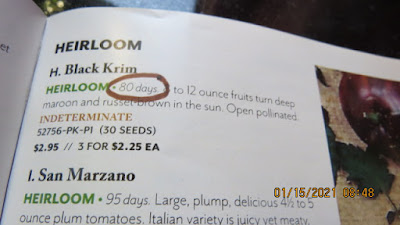 |
| Photo: Joyce D'Agostino |
This time of year, the colorful gardening catalogs are arriving in the mail and online. As you go through the catalogs, there are few things to keep in mind to help you have the best gardening success. If you are new to gardening or experienced, knowing this information is important so that you clearly understand which plants are and are not suitable for your zone, saving you time, money and frustration:
1. Hardiness Zone - One of the most important pieces of data to know as you begin to consider and choose your seeds and plants is your gardening zone. Some catalogs will note this information in the descriptions in order to advise you if that plant can be grown in your zone. If you are unsure of your zone, refer to the USDA hardiness zone official government website. Watch for the notation on the seed or plant description such as “zone 3-6” to know if this plant is suitable for your climate. Be aware that some states such as Colorado can have multiple hardiness zones, soil conditions and elevations (and also as noted below, multiple growing season lengths), so use your zip code to find the most accurate zone.
 |
| Photos: Joyce D'Agostino |
2. Days to harvest – The days to harvest means how long it takes for a planted seed to produce a mature fruit or plant. For example, if you choose a tomato more suited for areas with longer seasons, and the dates for maturity are close to the end of the average range of growing days, then that plant will likely not produce a harvest in time before the first frost. The Colorado State Extension reports this following information to help explain how to determine days to harvest: “The average last killing frost in the spring is can range from May 15 to as late as July, and the average first killing frost in the fall is can be as early as August into October. Growing seasons can therefore range from 30-150 days. Remember, these are just an average. The beginning and ending of the growing season are quite variable from year to year. Planting the right crops at the right times and providing frost protection when needed will help ensure success.”
The weather of course can always be a big variable for any climate and season. We’re all aware of how one season could have mild weather and adequate rainfall and the following year can have different conditions and what grows well in the western part of the state may not be as successful in the mountains.
The zone, days to harvest and growing season information should assist you in choosing the right plant for the right place in your garden and landscape. Remember to keep notes about how the plants you selected performed with these variables.
It is also important to be aware that some large store that are not primarily a garden center can purchase from a source in other states or locations and some of these plants and seeds may not be suited for your climate. Checking the plant tags and the seed packets carefully prevents purchasing a product that will not produce quality results.
 |
| Photos: Joyce D'Agostino |
The following links provide science and research-based information to help you determine your zone and growing season length, weather and microclimates:
https://extension.colostate.edu/topic-areas/yard-garden/vegetable-gardening-in-the-mountains-7-248/
https://gilpin.extension.colostate.edu/programs/mtn-hort/microclimates/






